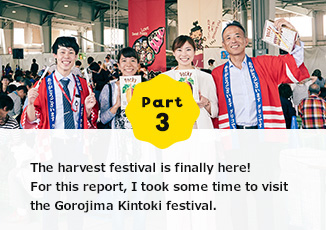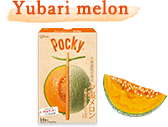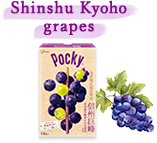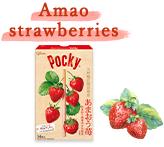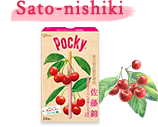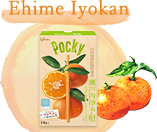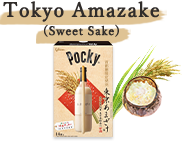There is an inclusive attitude here in Kanazawa, which embraces both the old and new. Small wonder, then, that Gorojima Kintoki Sweet Potato got its start here.
Kanazawa retains both the classic streetscapes and culture of yesteryear while also offering more and more unique and stylish spots to hang out.
This classical Japanese town is seeing an influx of tourists from both within Japan and abroad. What sorts of charms does it have to offer?
In this second installment of our tour through the home of Gorojima Kintoki Sweet Potato, we meet up with Agatha, a Polish study abroad student at Kanazawa University who had lots to share about what makes Kanazawa great.
The culture of tea ceremony flourished here, so sweets to accompany it were a must.
Kanazawa sweets rank alongside Kyoto and Matsue confections.
The unique, seasonally-informed culture of sweets is also deeply-rooted in the lives of the locals.
We tried our hand at producing Japanese sweets with the aid of an artisan at a longstanding confectionery here,
learning about just what kinds of desserts can be made with Gorojima Kintoki Sweet Potato.
Just for this project, we received guidance from Taihei Yoshihashi, the second son of the Yoshihashi sweets shop, a longstanding artisanal shop located in Kanazawa’s Higashi Chaya district.
The shop makes all of its sweets fresh to order by request for tea ceremonies and other events. They are thoroughly committed to this approach and are very popular in the area.
For our visit, they showed us how to use a fresh pick of Gorojima Kintoki Sweet Potato to make a luxurious fresh sweet.
The menu consists of three items inspired by autumn: “Fall Foliage,†“Chrysanthemum,†and “Kinton†(mashed sweet potatoes).
For Fall Foliage and Kinton, sweet potatoes are used. For the Chrysanthemum, we opted to use azuki beans to compare the flavor.

Three unique sweets brimming with an autumnal feel
Our instructor had prepared for us a sweet potato dough, strained azuki bean paste, and “nerikiri,†a dough made from red and white bean paste. We took inspiration from the plants and flowers of autumn to create our sweets.
As its name suggests, the Fall Foliage takes inspiration from autumn leaves. Sweet potato paste and glutinous mochi rice are gently kneaded in the hand into the shape of a leaf, with a ball of strained azuki paste rolled up in the center. Next, a triangular rolling pin is used to mark the “veins†of the leaves. The sweet is now complete!
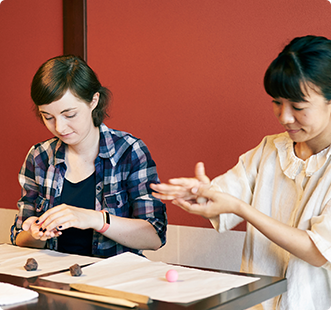
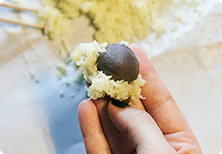

“Chrysanthemum†is made by layering up strands of red and white “nerikiri†around a ball of strained azuki paste, with a gentle ball rolled into shape with the tips of the fingers. A triangular rolling pin is then used to mark the veins of the leaves.
Lastly, the triangular rolling pin is again used to give texture, and a yellow flower stem is finally added.
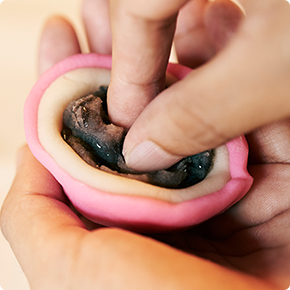

Our third dish, the “Kinton†sweet, uses sweet potato seeds finely ground into a crumbly powder. This is adhered to a ball of strained bean paste using chopsticks. It looked simple, but it was surprisingly difficult!
Our teacher did everything with an experienced, brisk hand, preparing a fluffy Kinton with ease. When I tried it, I found that using the right pressure to stick the powder to the bean paste without crushing it was easier said than done. My piece kept crumbling into bits...
Japanese sweets are something we enjoy without often taking into account the skill and precision that goes into making them. Behind every lovely sweet is an untold amount of artisanal skill.
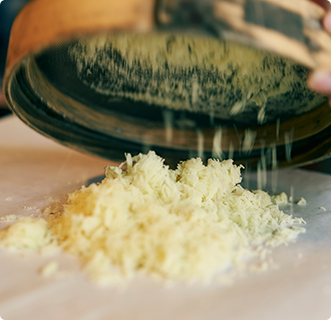
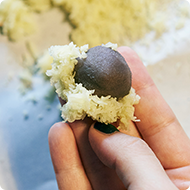
At last, presenting a finished piece!
Compared to the Chrysanthemum, which made use of azuki beans, the Fall Foliage and Kinton sweets, with a Gorojima Kintoki Sweet Potato base, had a smoother, subtle sweetness and clean finish. While both used sweet potato, the Fall Foliage had a denser, moister texture. The Kinton crumbled apart in the mouth for a soft, fluffy feel. I can only pick at cake with whipped cream, but the sweet potato Kinton is one I could see myself slurping up two or three of!
Kanazawa offers not only the traditional culture of the tea ceremony, but rich natural environs and a streetscape in which you can see the seasons changing. This experience showed me that the traditions associated with sweetmaking are alive and well here.
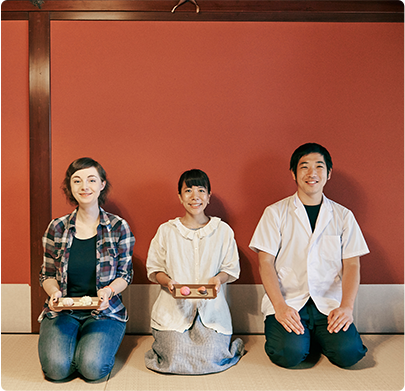
*Please note that Yoshihashi does not normally offer Japanese sweetmaking workshops or sell sweets that make use of Gorojima Kintoki Sweet Potato. This was a special one-off for this project.
From the 21st Century Museum of Contemporary Art, Kanazawa, to Kenroku-en, the Chaya district,
and the Ohmi-cho Market... Kanazawa is home to many touristic destinations.
Beyond those, one of the unseen charms is the ease of living here that people find when they take up roots in the area.
We met with Agatha, a study abroad student who has spent a year here, to get her unique take.


![]()
![]()
Agatha is a Polish study abroad student learning Japanese and studying Japanese culture at Kanazawa University.
Her hobbies include visiting museums and cafes. She also loves matcha tea, red bean paste, and Japanese sweets.
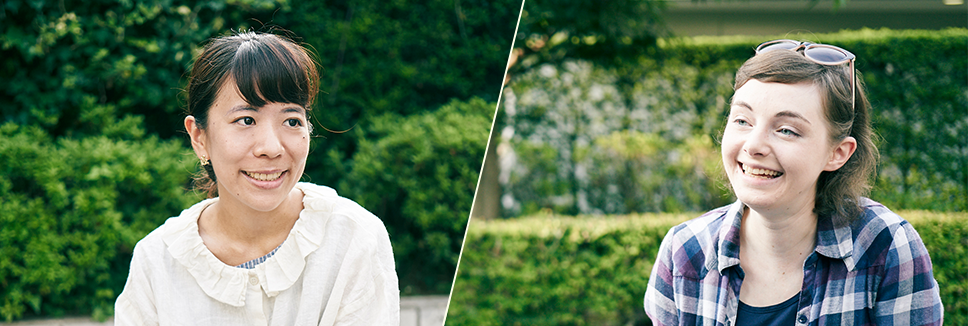
Let’s visit Kanazawa, where there’s lots of greenery -- and lots of culture, too
-- Why did you opt to study abroad in Kanazawa and not in Tokyo or Kyoto?

- Actually, the University of Warsaw has a program where one or two students come to Kanazawa each year. I had heard it was a charming city, and that the students and faculty are kind. My sense was that, with Kanazawa so actively preserving its traditional culture, I would get exposure to things I wouldn’t elsewhere. In a big city, I would probably get lost in goofing off and not be able to study. Since I’ve taken off time from school back home to come here, I wanted to be able to focus on my own interests. I felt Kanazawa would give me a quiet and relaxing atmosphere in which to do that.
-- What is your study abroad life like so far?

- I have lived in a dorm on campus over by the mountains. On weekdays, I mostly focused on going to class and studying. I would also hang out with friends from the dorms.
On the weekend, I’d come out to Kanazawa downtown and visit the museums, go on walks, and so forth.
Kenroku-en is free admission for residents on the weekend, so I would go there often.
The scenery in Japan changes remarkably depending on the season and weather. Even places I am familiar with look different each time I visit.
Kanazawa has a unique local feel
that let me connect with a lot of locals.


--so how has it been, summing up, spending a year
in Kanazawa?

- It was outstanding!
I had many places to choose from, but I’m really glad I went with Kanazawa in the end. A different place might not have left such an impression on me. There was lots of natural scenery near the campus. Kanazawa really has lots of places where you can unwind. I also linked up with lots of locals. I probably wouldn’t have as many friends if I had gone to school in a big city.
--What kind of people did you get to know, for example?

- Well, the students at my part-time job, for one.
An instructor at the university introduced me to a chance to teach English to local women in their 40s-50s. Each week, we would have lessons in English conversation, which in turn opened up opportunities to learn about Japan and its culture.
For instance, they taught me that in spring, the Asian skunk cabbage blooms. I told them we don’t have such a flower in Poland, so they took me to see it on the weekend. Other people include my tea ceremony teacher and host family. *The host family exchange program at Kanazawa University allows students from abroad to experience living in a Japanese home, with each family acting as “host†parents for them and serving as a lifeline, including sharing meals together and going out to learn about the area.
--I first learned about the homestay program through you. It’s quite an attractive system. What kinds of things did you do with your host family?

- We would go out to eat once a month or go out someplace.
The first people to take me to the D.T. Suzuki Museum, which I will take you to later, were my host parents. Through my host parents, I learned about things that only locals here know. It was a great experience.
It was much more than just studying abroad and seeing the sights. It really felt like I had lived here for a long time.
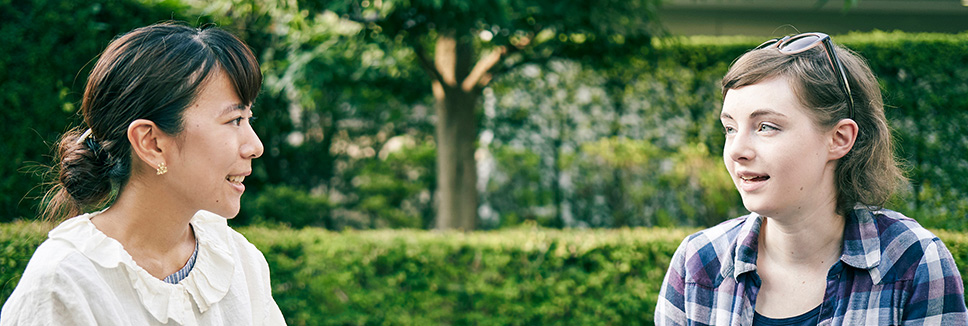
The happiest part of my Japan experience was building what felt like a second family here.
--you really took like a fish to water to living here. What is your most lasting memory of your study abroad experience?

- That would be Christmas.
For Polish people, Christmas is a really big deal, and also has a religious aspect. My parents only get a chance to see their siblings about twice a year, so Christmas is always a full family affair. This was my first time spending Christmas outside of Poland, so I wasn’t sure if it would go so well. But my host family brought together other host families from the program. We had about ten people together to have dinner and talk. I felt like I was with a family, even though I was here in Japan. It really touched me.
I spent a whole year away from my family, so having people by my side was really touching.
--If you come to Japan again, What season would you like to come during?

- Definitely fall. Fall is so beautiful here.
Poland is nice, too, but the leaves just turn yellow. It was in Japan that I saw for the first time the leaves turn bright red.
--Thank you for sharing so many details with us!We hope you’ll share your newfound Kanazawa with your friends back in Poland. Thank you very much.
Agatha told us she likes spending her days off from school by taking walks through Kanazawa.
As someone from Poland, what does she find charming about Kanazawa?
She took me on a tour of her favorite spots.

Our first destination was OH!LIFE, a “book cafe†right by Omi-cho Market.
The landmark to look out for is a cute illustration and the OH! LIFE text painted on the exterior wall.
Like a tiny library
Bookshelves built into the walls feature the owner’s collection of books on the subject of food. They range from cookbooks to essays on cuisine and magazines. The eat-in area has just six seats, making for a cozy space to enjoy a drink, soup, or a slice of toast (made from homemade bread!). The owner previously worked at a bakery and restaurants, so his finely crafted bread loaves are a big sensation!


The “Pullman†bread made from Hokkaido wheat has a deliciously toothy texture.
Agatha recommends a bit of coffee and toast.
They also serve sweets, French toast, and other items, but we opted for the onion gratin toast.
The melted cheese pairs with the sweetness of perfectly sauteed onions, and it all intermingles with the toast for a moment of bliss. Apparently, there are lots of patrons who come from far and wide to try this toast -- I can see why!
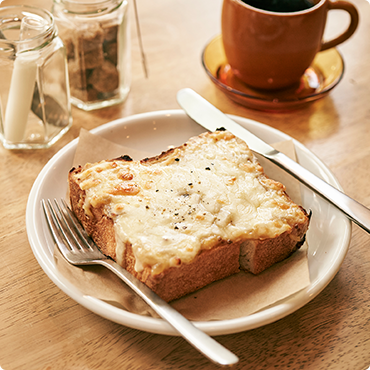
Easy and accessible -- perfect for the solo patron
Agatha says a fellow study abroad student told her about OH! LIFE. I like the atmosphere here. It’s good with friends, or to read a book alone, or even just pop by for a bit of coffee -- which, by the way, is delicious.
The cozy feeling imparted by the books and the friendly disposition of the owner make this a charming and open environment in which tourists, ex-pats, and people from other neighborhoods happily congregate.
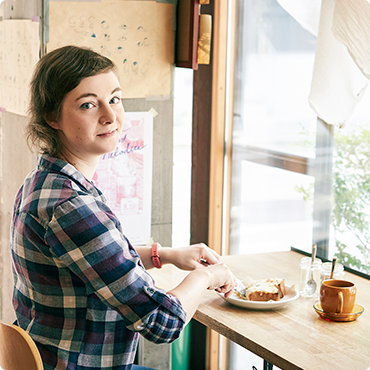

Our next visit was Seseragi Street. It is located just 10 minutes by bus from the east gate of Kanazawa Station.
Located off a side-street from the main drag where the department stores line the Korinbo area,
Seseragi Street flanks the Kuratsuki Canal with unique cafes and shops selling sundry goods.
This backstreet through Korinbo features the pleasant sound of flowing water
We visited on a weekday afternoon and found the area all but devoid of tourists, with a retro, nostalgic feel. Time seemed to move slower.
Step into an alley to find yourself in the Nagamachi Samurai Residents District.
This quiet backstreet is so subtle that you would never guess a main thoroughfare is on the other side. The sound of the gently flowing water is the perfect backdrop to a leisurely stroll.

Shops loved by local ex-pats
Agatha says she happened by chance to find Seseragi Street while out on a walk.
She likes to come from time to time to enjoy its quiet mood. Agatha told us that Aashirwad, a Nepalese curry restaurant, is a sleeper hit among local ex-pats living in Kanazawa.
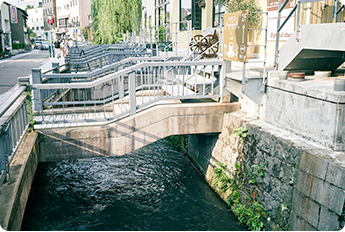
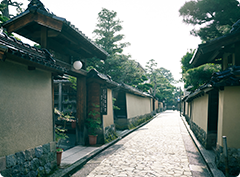
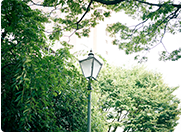

Lastly, Agatha took us to the D.T. Suzuki Museum, calling it her “favorite place in all of Kanazawa.â€
This museum is dedicated to the ideals of D.T. Suzuki, a Buddhist philosopher who popularized the concept of Zen to a wider audience around the world.
It turns out that this spot is wildly popular among those visiting Japan,
with non-Japanese guests numbering a whopping 25%.
A tiny museum to Zen in a quiet forest
It is located just 15 minutes by bus from Kanazawa Station. The D.T. Suzuki Museum is located in the foothills of a forest not far from the city center.
Though modest in appearance, the modern building has a distinctive gravitas. It was designed by Yoshi Taniguchi, who has deep ties to Kanazawa.
The idea was not to recreate the past, but rather bring D.T. Suzuki’s ideas alive into the present.
The items on display are kept to a deliberate minimum to as to allow the visitor time to contemplate within the space.

Emptying the mind and becoming one with the surroundings
“Being hear truly soothes my soul.â€
Agatha sits down on a bench and is the very picture of relaxation as she takes a leisurely look at the nearby water and natural scenery. She seems to have taken the lessons of Suzuki to heart, emptying her mind and becoming one with the nature around her.
“The ideals of Zen are like the tea ceremony. You concentrate your attention on the present moment, being mindful of yourself and those around you. This is quite a Japanese way of thinking and is not found in Europe, so it’s very interesting to me.â€
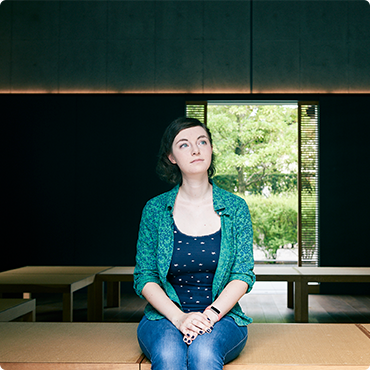
The scent of greenery and the burbling of a brook.
There is a forest just behind the museum, with trails leading to the Kanazawa Nakamura Memorial Museum and the Ishikawa Prefectural Museum of Art.
Step outside and you are ensconced in nature. The space is so serene that you will almost not want to leave.
Worried that you don’t know enough about Zen to make the most of the experience? Fear not.
Simply taking yourself outside of the hustle and bustle of everyday life and gazing at the beautiful form of the building and the nature close at hand is a perfect way to occasionally rest the mind.



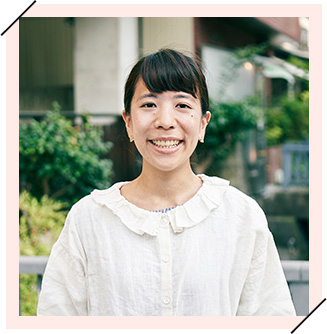
Discovering anew the charms of Kanazawa with my European guide!
The vast nature of Kanazawa is where the Gorojima Kintoki Sweet Potatoes are grown. Agatha, a Polish study abroad student, gave us new insights into the charms of Kanazawa, where the best of Japan’s traditional culture is alive and well.














